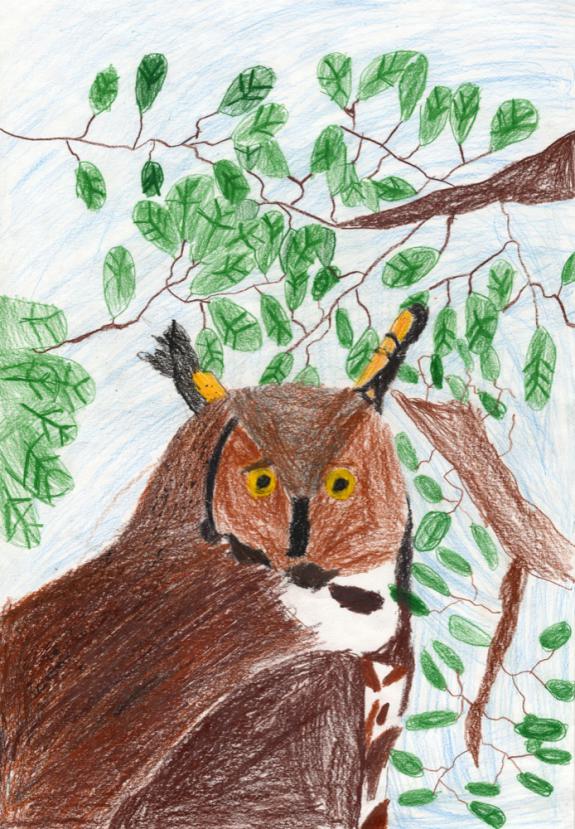Peter Gallo, Thomas B. Conley School
Hunterdon County
 Long-eared owl. Hunterdon County. Peter Gallo
Long-eared owl. Hunterdon County. Peter Gallo
Long-eared Owl
Hello, my name is Bob. I am a long-eared owl. My species is a threatened species and I hope that you can help my kind's population grow back to a higher amount. I know I am called a long-eared owl but I don't actually have long ears. They are ear tufts used for camouflage. My real ears are on the sides of my head and aren't visible. I'm lean with a light tan stomach. There are feathers on my legs, feet, and body. An interesting fact that you probably don't know is that we are nocturnal. Also, the nests that we live in are not made by us. We live in old nests of other birds. We lay four to five eggs that hatch in about twenty-five to thirty days. The mother stays in the nest with the chicks for another three to four weeks. The male hunts then for the family. We eat mostly animals that are small like voles, mice, shrews, and rats. If desperate, we will sometimes eat insects, songbirds, and snakes.
Our population has been decreasing mainly because of development. It has taken away usual roosting and nesting spots. Building in forests and open areas hurts our population. If our species becomes extinct there could possibly be an overpopulation of voles, shrews and rats. We also eat bugs that a lot of people find annoying so that means if we aren't living there will be more insects. One way to help our species survive is to stop deforestation. It is a major harm to long-ear owls and many other species, too.
Written by: Peter Gallo
Thomas B. Conley School, Asbury
Teacher: Ms. Dawn Lanner




